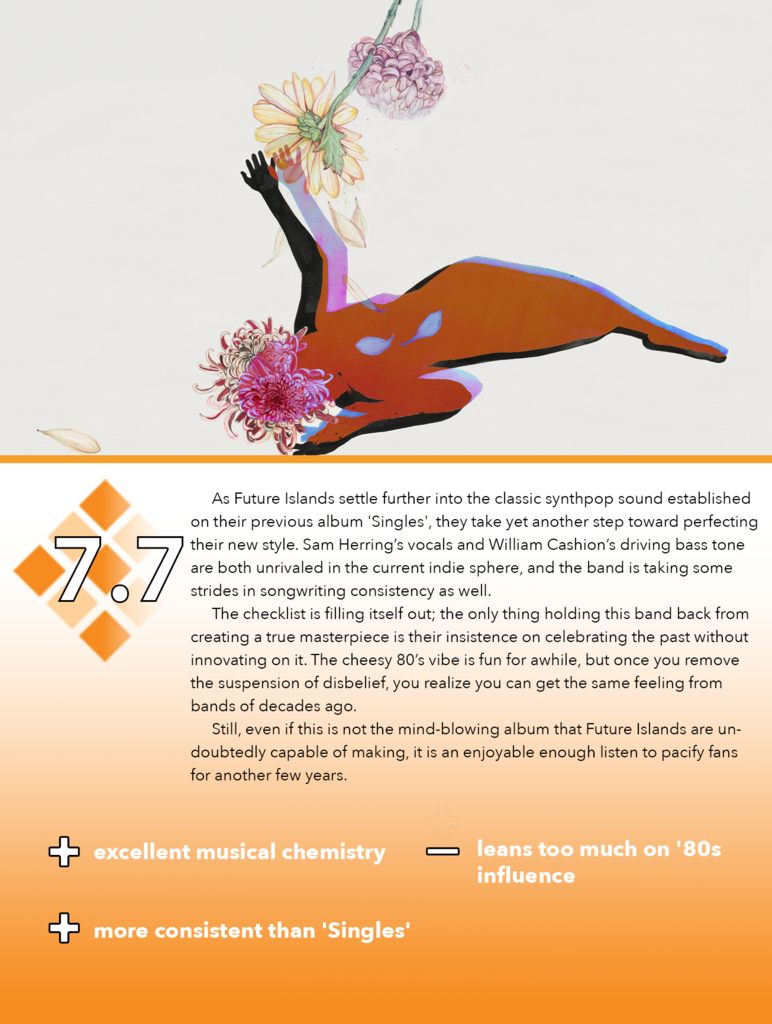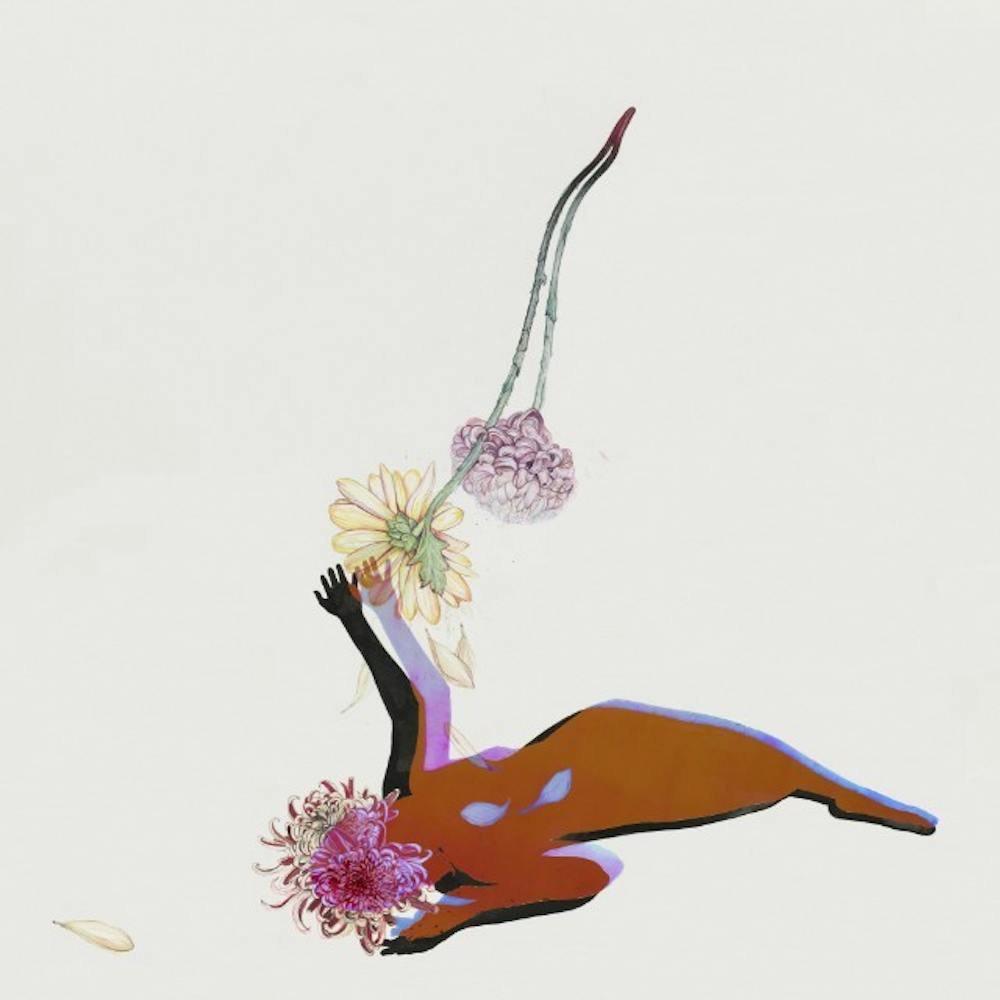Best tracks:
“Aladdin”
“Time on Her Side”
“Cave”
Recommended if you like:
A Flock of Seagulls
Talk Talk
U2
When Future Islands made their network television debut on David Letterman in 2014, their performance of “Seasons (Waiting On You)” briefly brought them worldwide attention. Vocalist Samuel Herring’s idiosyncratic dance moves and occasional death growls took the world by storm, proving once and for all that this band has the capability to evolve into one of the most timeless indie pop bands of this generation. With The Far Field, the band is just about there, which has been a common sentiment among their fanbase for years. The album’s predecessor Singles contained many of their best songs but lacked the consistency to make it great as a whole. Ultimately, this isn’t much of an evolution in their style, but the songwriting is a little bit more consistent and it’s certainly a fun listen regardless.
The worst parts are just a little bit better
The most commonly repeated criticism of Future Islands is a legitimate one: the best songs on the album are incredible, but the deeper cuts don’t have much to offer. Though the band’s sound has slowly but surely changed over the course of their five albums, this issue has remained consistent the entire time. They’ve never written bad music per se, but the typical Future Islands record has at least a few moments that border on dull. For some reason, they are perfectly capable of writing great music but not 45 minutes of it in a row.
The Far Field fixes this problem a little bit. Although the beginning of the album is noticeably better than the end, there are no real duds anywhere to be seen. The worst songs are still pretty good, or at least contribute to the album in a way that makes it better. Among these weaker tracks is “Candles” for instance, but despite its faults that song still brings a slower pace to the album that would have been missing if they had omitted it. “Shadows” is worth keeping if only for the feature from Blondie’s Debbie Harry, whose voice fits surprisingly well with Herring’s.
The lyrics reach new heights on this album for the Future Islands discography. There are some weak spots in this element as well, but at their best, they are one of the major sources of innovation on The Far Field. They start at their strongest with the first verse of the opener “Aladdin”. It’s easy to miss how mysterious and poetic this verse really is, because the vocals fit right in with the rest of the mix. Herring’s wonderful delivery of these lines makes it easy to forget to listen for their meaning, which only makes the song more enthralling on repeated listens.
Future Islands stay rooted in the past
Now that Future Islands have transitioned fully into making synthpop music, they spend a lot of time paying homage to the new wave bands of the ‘80s. Some of the more energetic moments call to mind a more serious version of The Human League or A Flock of Seagulls. It’s a great sound that a lot of bands are toying with right now, and Future Islands are doing it better than many others, but there’s still not much musically that’s different from groups who have already had their time.
The less incredible lyrical moments also reveal the strength of the ‘80s influence. Some people will like that the band doesn’t shy away from showing their admiration for this sound, but it would have been nice to see them work more for their own style of lyrics when the notes already pull so much from old synthpop. This is really only an issue with songs like “Through the Roses” where the chorus is “We can pull through together”, although the context and buildup of the song creatively turns the trope on its side.
A sonic jigsaw puzzle
Without exaggeration, the musical chemistry of Future Islands is one of the most unstoppable forces in music right now. Each member of the band is brilliant on his own but also contributes to the sound as a whole in a way that creates an incredibly warm sonic atmosphere overall. It would be easy to rave endlessly about Sam Herring’s vocals, which are the most flexible and unique part of the album, but credit is due for the performers behind him as well.
Bassist William Cashion also has a ridiculous amount of talent, immediately catching the listener’s attention with the groovy line at the beginning of the brilliant single “Cave”. Although this song marks the point where the bass is at its most prominent, the omnipresent dark tone throughout the album is one of the major factor in giving The Far Field its serious, sophisticated feel. Meanwhile the synths are as effective as they have ever been, and there is quite a bit of creativity in the percussion as well with the clever use of claves and agogo bells in “North Star”.
The performance aspect alone keeps hope alive that Future Islands are eventually going to move past making good albums and start making great ones. They clearly have the talent to make it happen, and until it does, their next album will always be something worth getting excited about. Meanwhile, the ones they are releasing now are nothing to dismiss at all. This may be the most thoroughly enjoyable Future Islands record to date, and if this is the sort of thing they want to keep releasing, more power to them. But if they can create something with significantly more variation and meaning, they have the potential to cement themselves as one of the most powerful bands in the world.

All Images From: Stereogum
Graphic By: Daley Wilhelm
For more entertainment related content, visit us at Byte Bsu!




















